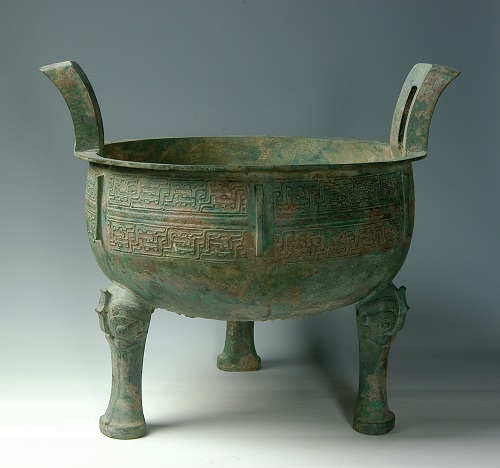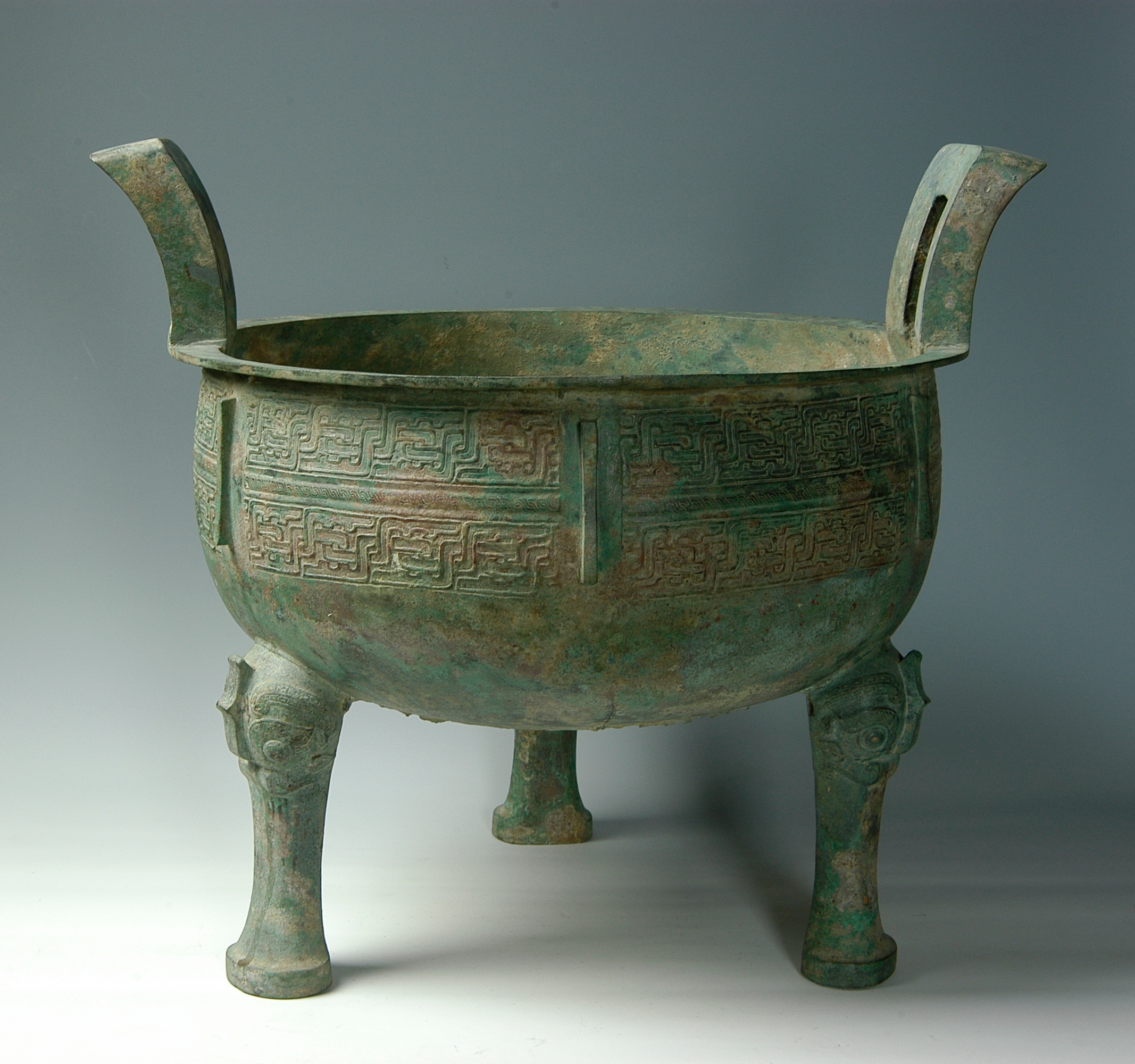
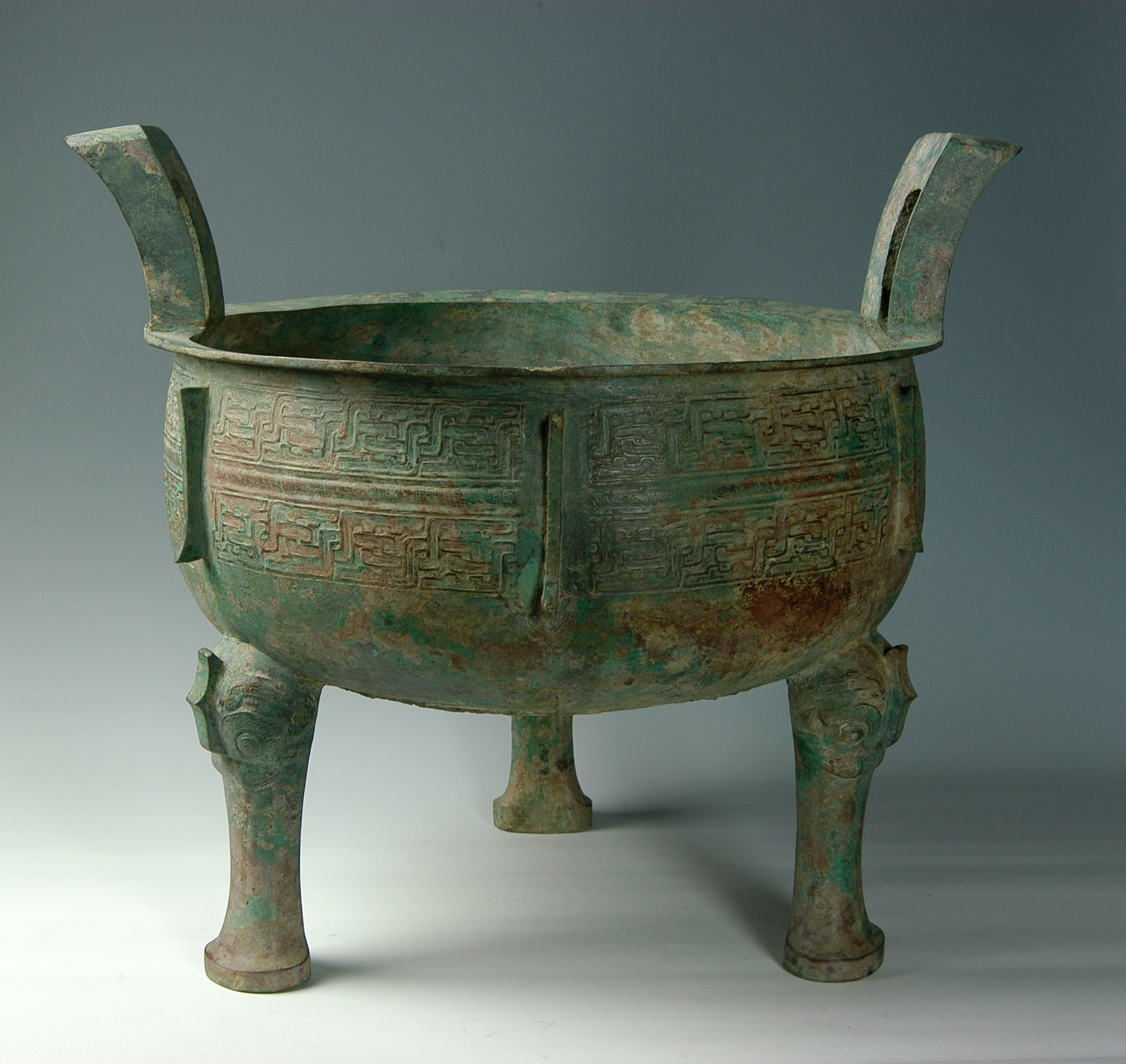
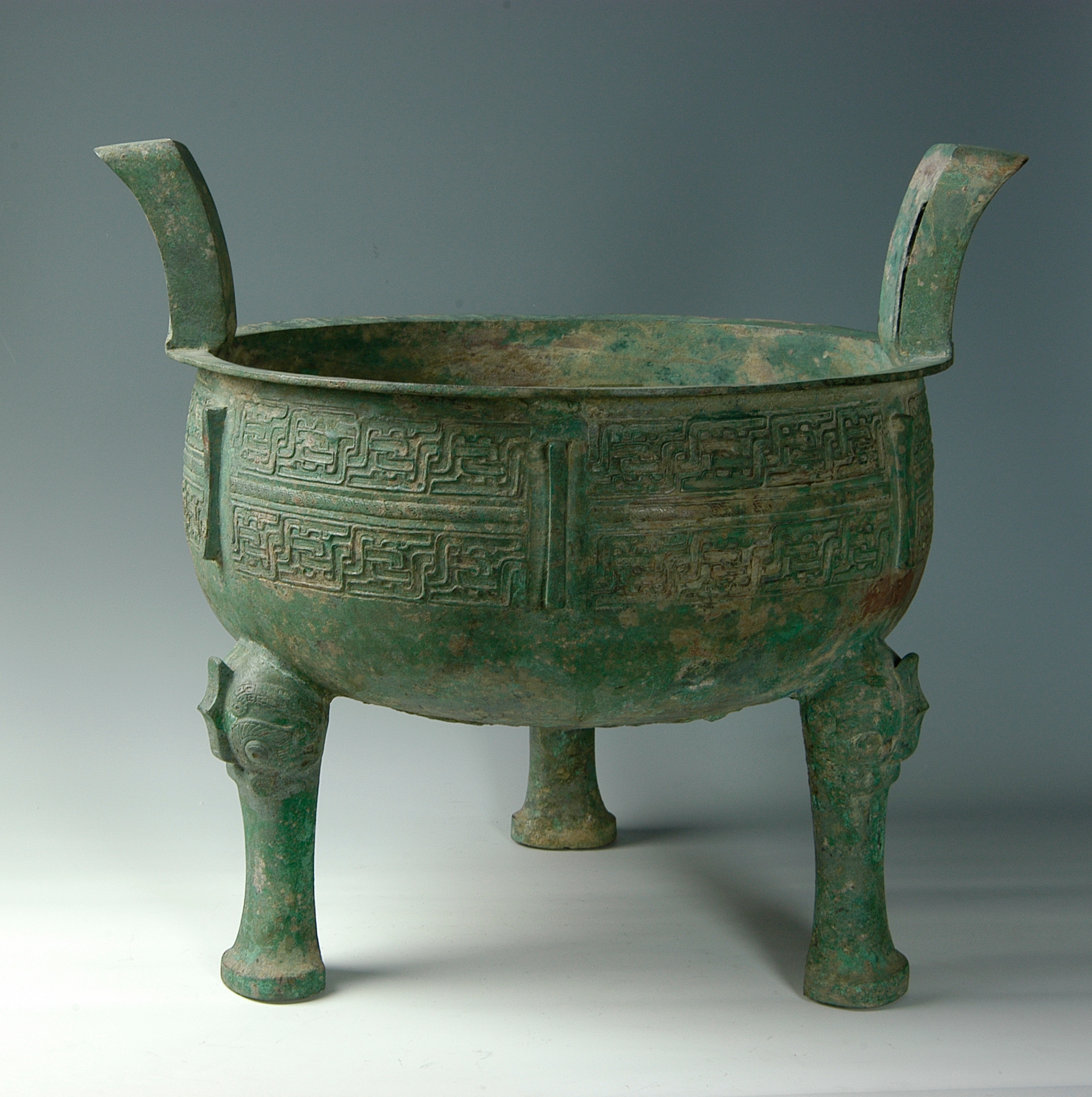
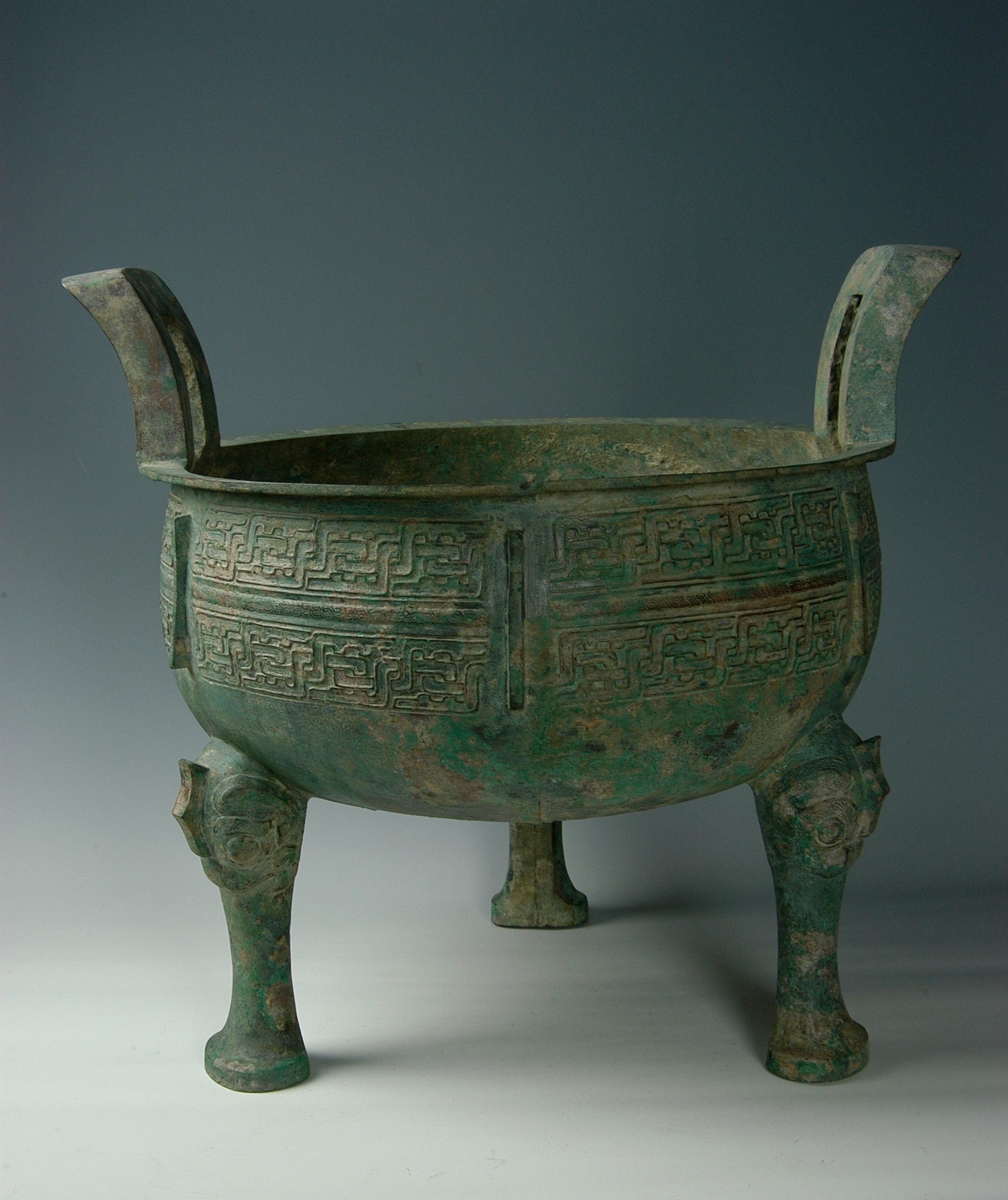
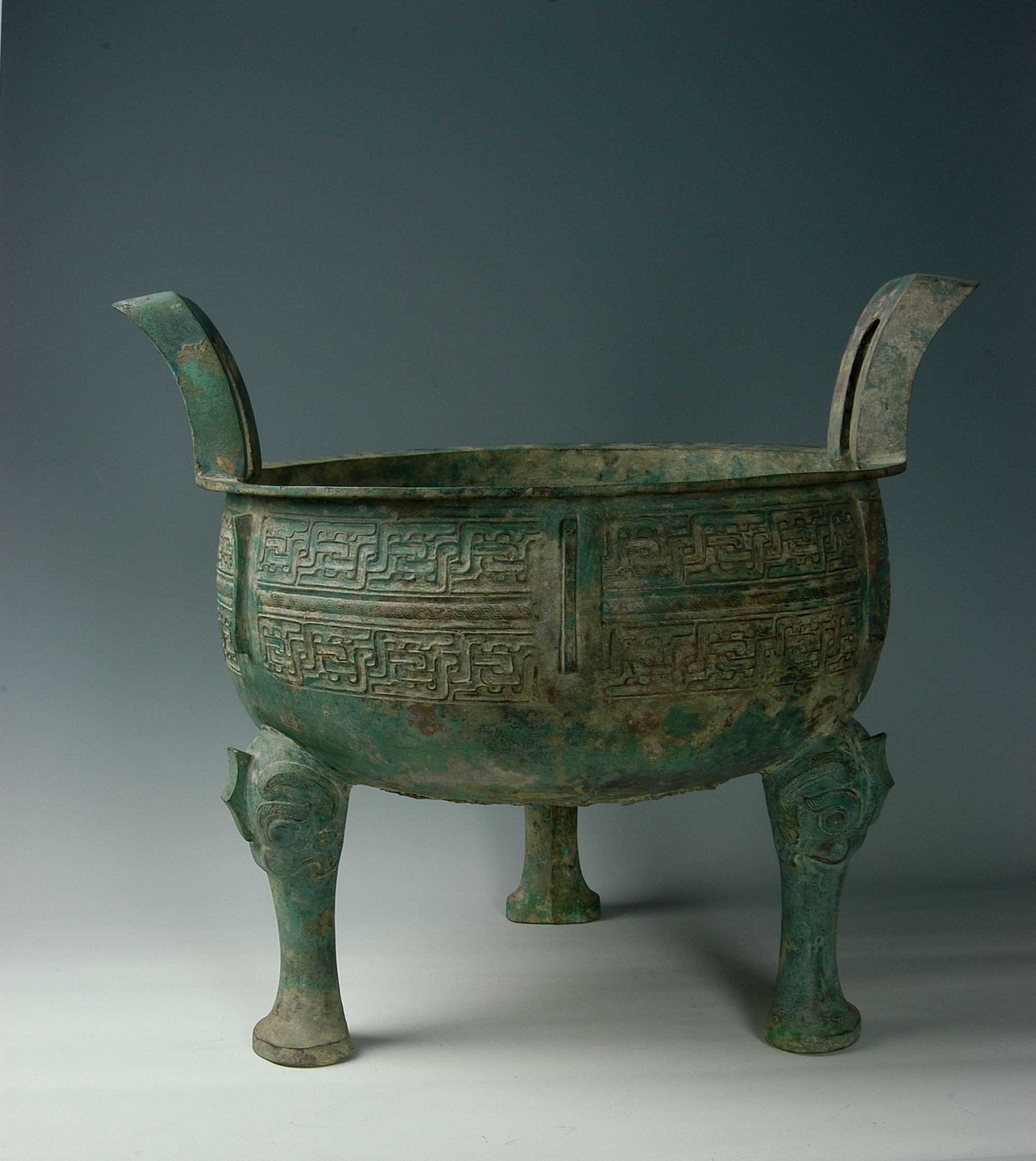
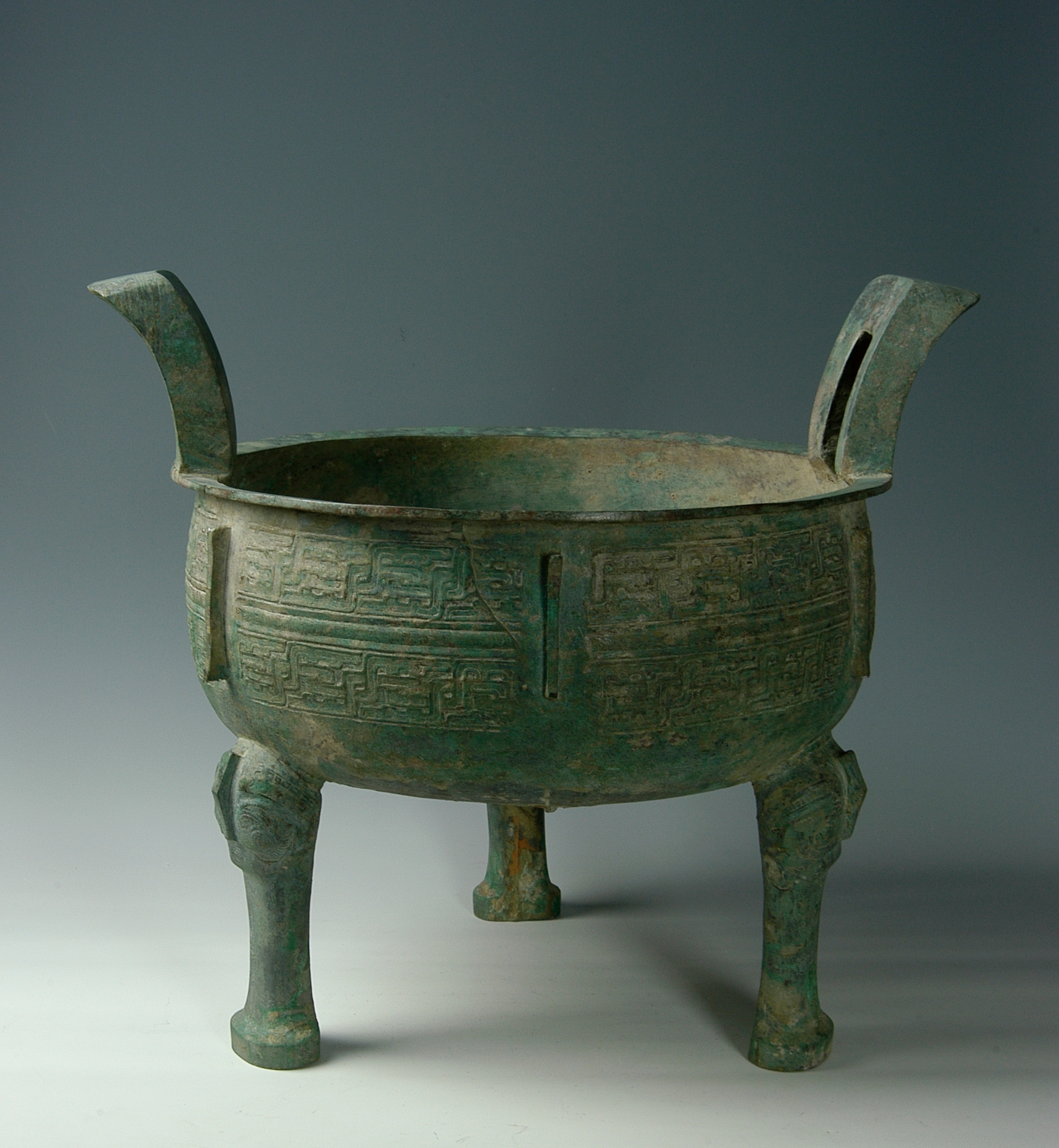
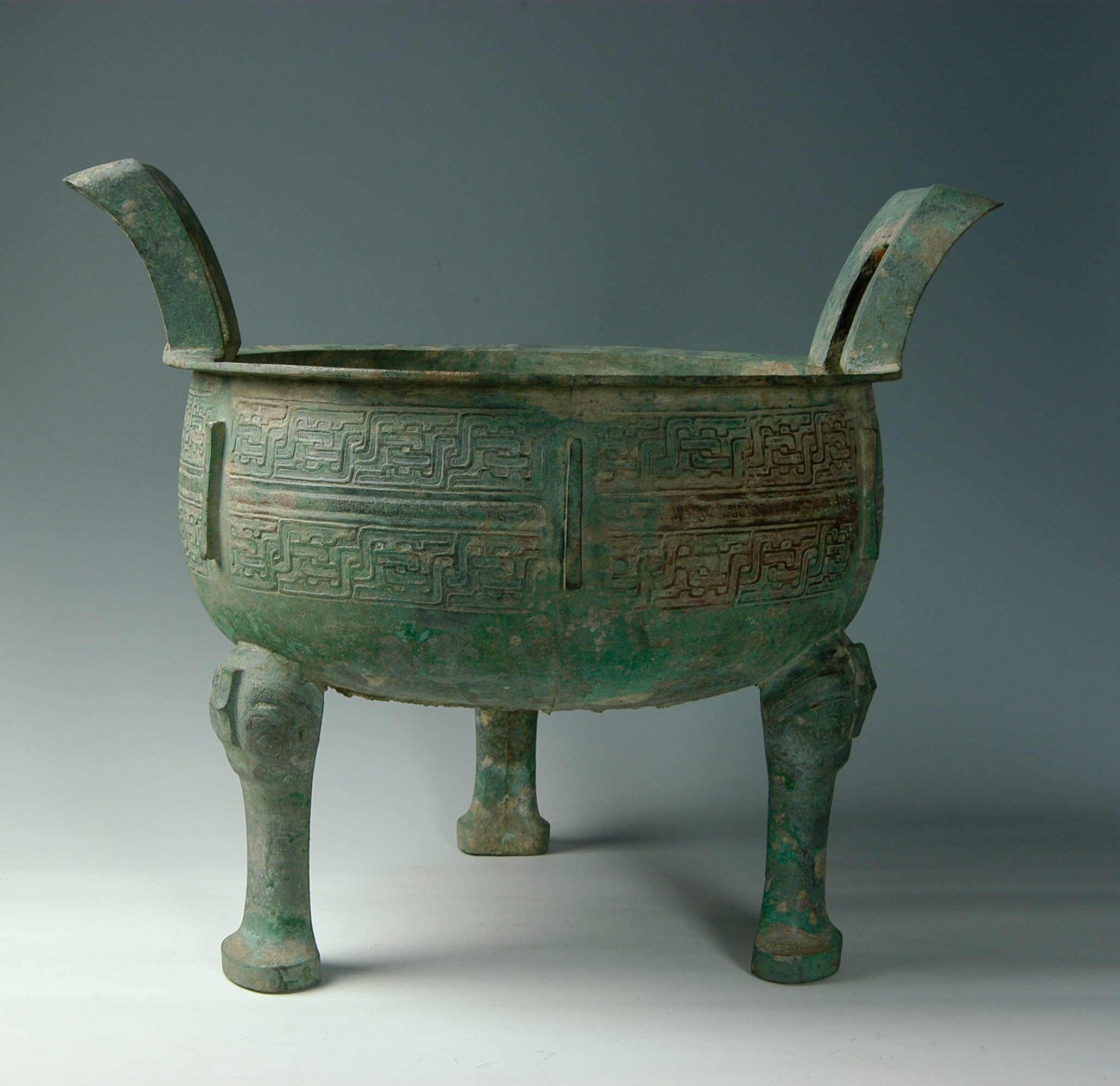
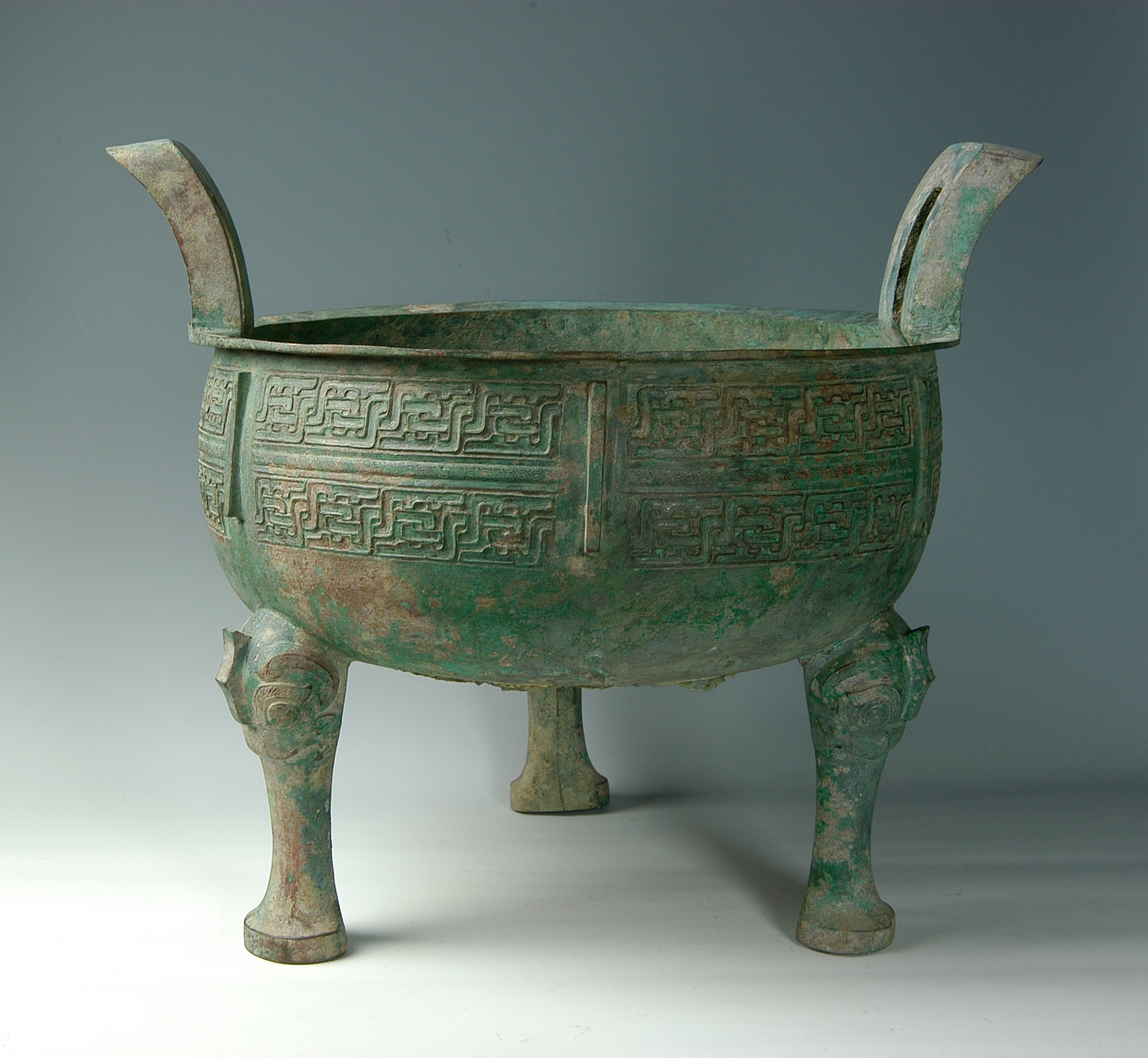
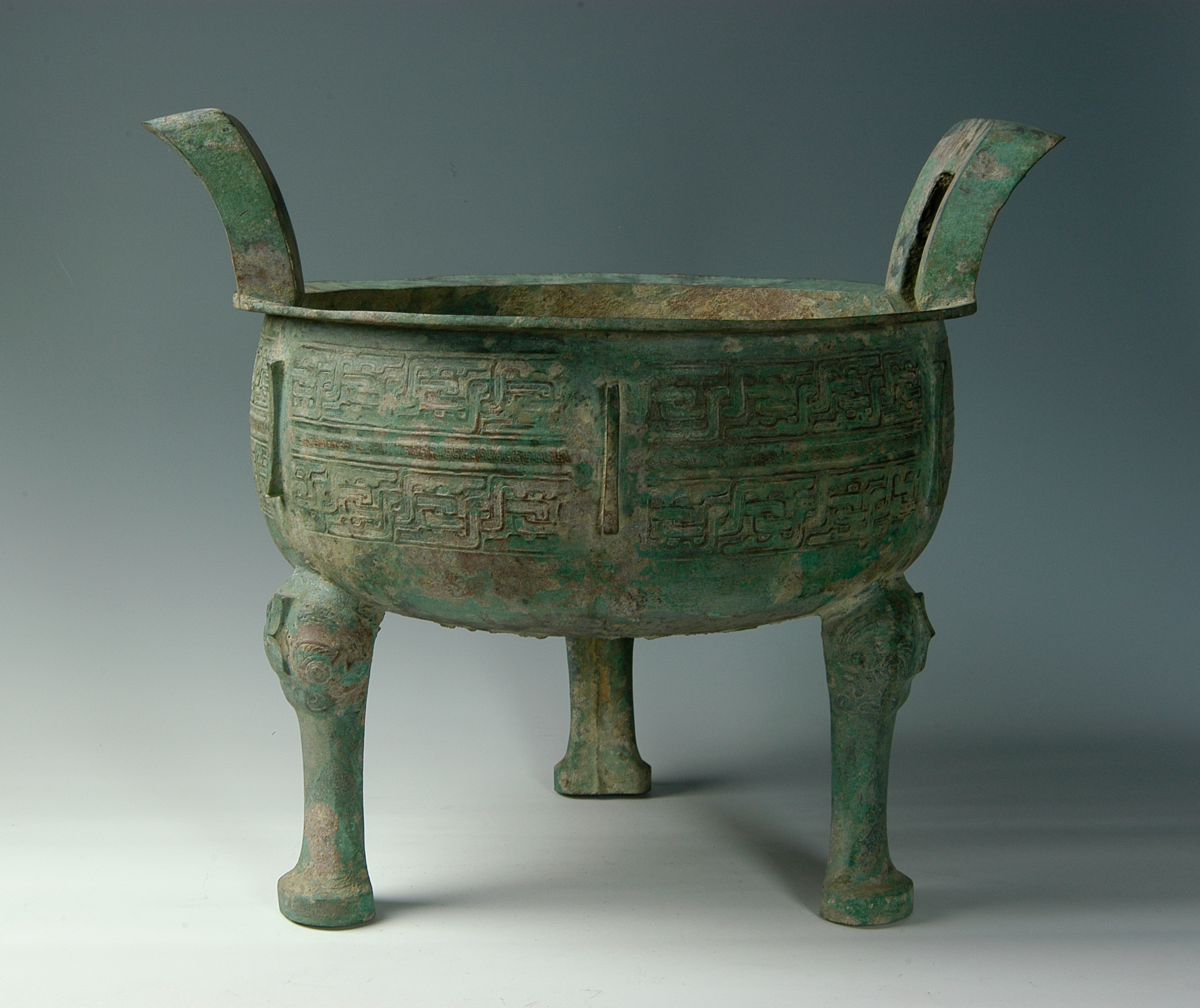
Date: Spring and Autumn Period (770-476 BC)
Provenance: Unearthed from the ruins of the capital city of the Zheng and Han states, Xinzheng, Henan province, 1996
Measurements: Height: 47-54 cm
The set of nine tripod bronze ding cauldrons with coiled dragon (panchi) patterns share similar shapes and designs. The overall shape of these bronze cauldrons is round and lidless, with an upturned rim, upright ears cast outward, a slightly bulging belly, a rounded bottom, and a tripod with hoof-shaped feet. The body is decorated with two bands of distorted panchi dragon patterns, with an additional girdle with a twisted cord pattern in the middle. There are six column bars set in the pattern band, and the base of the legs is adorned with a beast face pattern.
These bronze cauldrons are arranged in a series, originally intended for nobles' banquets or sacrifices. Nowadays, it usually refers to a set of cauldrons with similar shapes and decorations, and in decreasing sizes. This system originated in the Western Zhou Dynasty (1046-771 BC) and served as a symbol of aristocratic status.
The number of cauldrons distinguished the hierarchy among different nobles. According to the Rites of Zhou (Zhouli), only the emperor can use nine cauldrons for dishing. These cauldrons were buried after the grand sacrifice for the god of land hosted by the Duke of Zheng, and their number exceeds the specified norms, indicating a transgression from established ritual norms, a common occurrence in the Spring and Autumn Period and Warring States Period (475-221 BC). This reflects the decline of the royal power of the Zhou and the rise of powerful vassal states.

